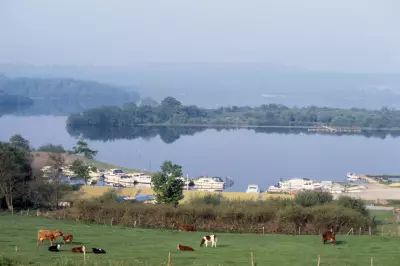
In the shadow of Yosemite's majestic granite cliffs, an extraordinary conservation story is unfolding, led by a woman whose passion for wildlife is rewriting the rules of environmental protection. Beth Pratt, once a self-described "indoor kid" from Massachusetts, has become one of America's most influential wildlife advocates, spearheading revolutionary projects to restore ecological balance to California's iconic landscapes.
The Wildlife Warrior's Unlikely Journey
Pratt's transformation from city dweller to conservation powerhouse began during childhood visits to her grandmother's house, where fleeting encounters with backyard wildlife sparked a lifelong fascination. "I was that kid with the binoculars," she recalls, her voice still carrying the wonder of those early discoveries. Today, as California's regional executive director for the National Wildlife Federation, she's channeling that childhood curiosity into one of the most ambitious conservation initiatives in recent memory.
Bridging the Divide: The Liberty Canyon Revolution
At the heart of Pratt's mission lies the groundbreaking Wallis Annenberg Wildlife Crossing—a visionary $92 million project rapidly taking shape over the bustling ten-lane Highway 101 in Liberty Canyon. This isn't merely an overpass; it's a lifeline, designed to reconnect habitats fractured by human development and give mountain lions, bobcats, and other native species safe passage across one of Southern California's busiest thoroughfares.
"We're stitching the landscape back together," Pratt explains with the conviction of someone who sees beyond concrete and steel to the living tapestry it will support. "This crossing represents hope—not just for wildlife, but for our ability to coexist with nature in increasingly urbanised environments."
P-22's Legacy: The Celebrity Cat Who Changed Everything
No story captures the urgency of Pratt's work better than that of P-22, the celebrated mountain lion who miraculously crossed multiple freeways to establish territory in Los Angeles' Griffith Park. For years, this charismatic cat became the unlikely face of urban wildlife conservation, his solitary existence in an island of wilderness highlighting the critical need for connected habitats.
"P-22 wasn't just a mountain lion—he was a messenger," Pratt reflects. "His struggle showed millions of people why these connections matter. He made the abstract concept of habitat fragmentation painfully personal."
Beyond Concrete: A Holistic Approach to Conservation
While the Liberty Canyon crossing represents a monumental achievement, Pratt's vision extends far beyond single structures. She champions a comprehensive approach that includes:
- Community engagement programs that transform local residents into wildlife advocates
- Educational initiatives reaching schools and businesses across California
- Policy advocacy for wildlife-friendly urban planning
- Scientific research to monitor corridor effectiveness and animal movements
The Ripple Effect: Inspiring a New Generation
Perhaps Pratt's most significant impact lies in her ability to make conservation accessible and compelling to diverse audiences. Through social media, public speaking, and her writing, she's demonstrating that wildlife protection isn't just for scientists and policymakers—it's a collective responsibility that urban dwellers, suburban families, and rural communities all share.
"Change happens when people care," she asserts. "And people care when they understand. My job is to build those bridges of understanding, just as we're building physical bridges for wildlife."
As construction continues on the Liberty Canyon crossing, with completion expected in early 2026, Pratt's work serves as a powerful reminder that even in our increasingly developed world, solutions exist that benefit both wildlife and human communities. Her story proves that with vision, determination, and a deep respect for nature, we can create a future where wilderness and urbanity not only coexist but thrive together.





